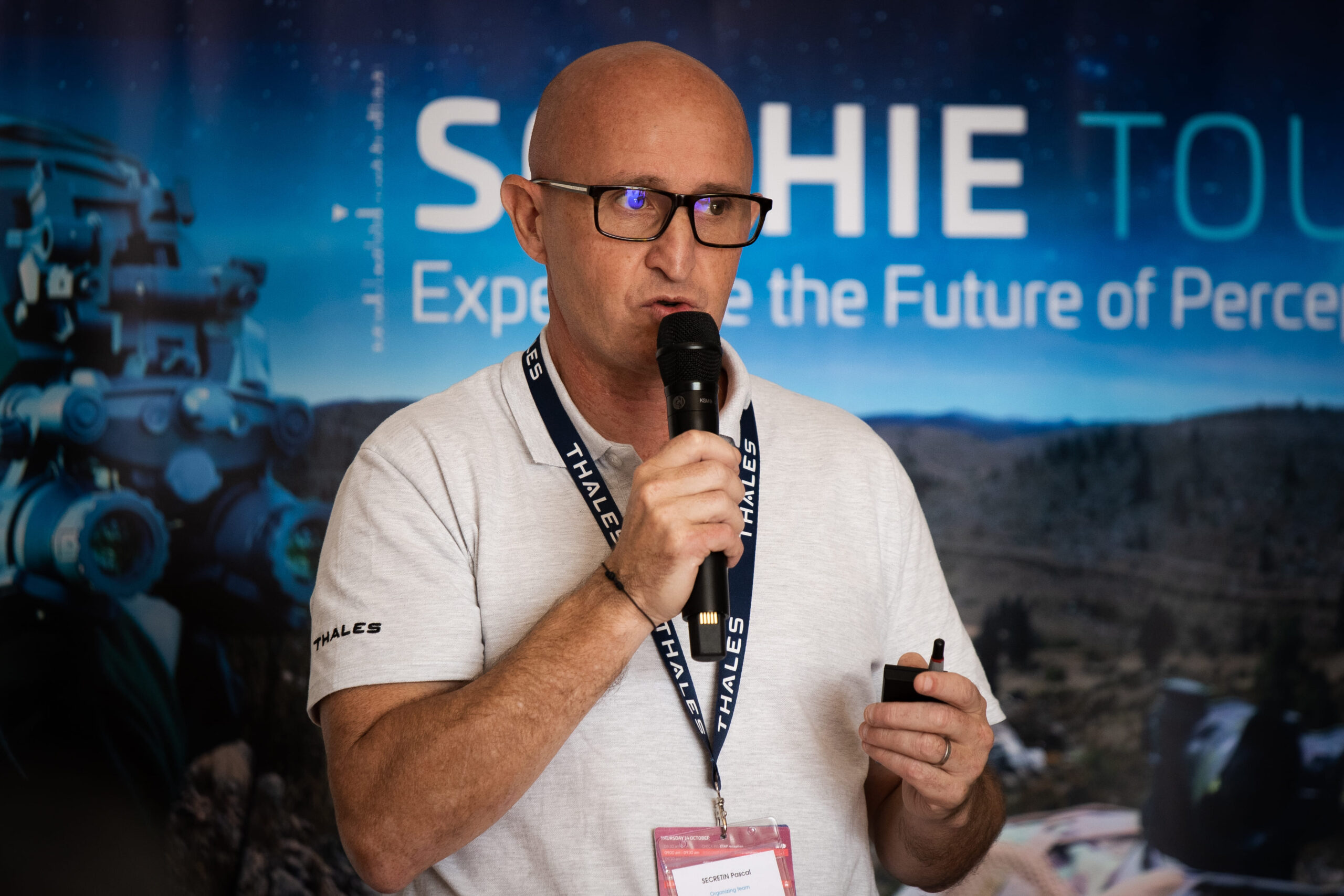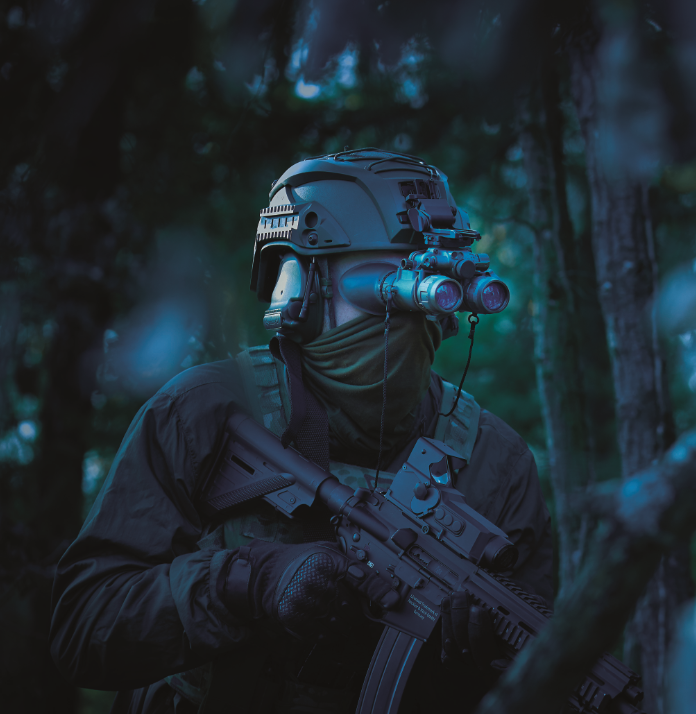A new white paper from Thales compares and contrasts the different image intensifier tube technologies used in high-performance night vision goggles (NVGs). Tubes with a glass output window emerge favourably from the comparison. Despite their greater optical complexity compared with twisted fibre tubes (due to the need for image reversal), they offer a number of important technical benefits. In addition, the non-linear performance of fibre-optic output windows leads to inconsistencies in the performance of both tubes and goggles. Measured in terms of various technical parameters, tubes with a glass output window deliver intrinsically better performance than tubes based on twisted fibre technology.
The use of tubes with a glass output window in binocular NVGs incorporating in-line optical solutions ultimately allows designers to strike a better compromise between mass, field of view (FOV) and detection, recognition and identification (DRI) performance. The use of glass-to-glass tubes also eliminates issues such as distortion and non-uniform luminance and gain arising from the manufacturing variability associated with the fibre-optic plates used in inverter tubes. Another important point is that the production of the glass output window does not require specific technology, thereby reducing the degree of dependence on non-EU technologies.
Tried and trusted technologies
Over the past twenty years, Thales has developed and produced a range of NVGs incorporating different types of image intensifier tubes. Its ultra-compact night vision goggles, such as the O-NYX goggles currently in production for the French armed forces, and other binocular NVGs with in-line optics, use non-inverting tubes with a glass output lens. The new white paper compares the benefits and drawbacks of using tubes with a glass output lens, and tubes incorporating a twisted fibre-optic plate as the output window.
Image intensifier tubes laid bare
The paper illustrates the different active and passive components of ‘proximity focused’ image intensifier tubes for hands-free night vision goggles, and explains the conversion and amplification stages which take place inside a tube (conversion of light into an electrical signal, amplification of the electrical signal, and conversion of the electrical signal into light).
In addition to the type of output window, other architecture options for the tubes are presented, including tube format, photocathode technology, and type of screen phosphor.
Glass wins out over twisted fibre
The different parameters examined in the comparative assessment of benefits and constraints are as follows:
- complexity of tube production and resulting complexity of goggle optics
- mass of tube and optics
- complexity of integration of a display channel
- constraints on tube performance and optical performance.



Leave a Reply